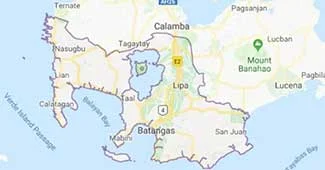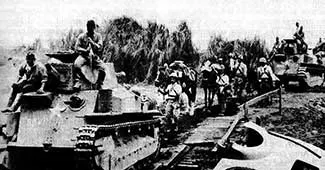10 Historical Trivia about Batangas All Batangueños Should Know
The history of the great province of Batangas overflows with richness and trivial notes will not do it any justice. That said, there are those who are averse to lengthy readings and it is to them that this article is addressed. The historical notes contained in this article are but snippets that will, it his hoped, encourage readers to take greater interest and read more on the fascinating past of this province we call home.
Batangas was the first province in Luzon explored by the Spaniards
When the Spanish conquistador Miguel López de Legaspi first sent an expedition in 1570 from the Visayas to explore the island of Luzon, Master-of-Camp (Colonel by present day nomenclature) Martin de Goite and Legaspi’s grandson Captain Juan de Salcedo, the leaders of the expedition, made exploratory stops at Balayan and Lake Bombon (Taal Lake) before sailing on to Manila Bay. Of course, Batangas as it is known in the present day still did not exist as a geopolitical unit.
Eastern and western Batangas were once physically separated
Before the cataclysmic 1754 eruption of Taal Volcano, a channel large enough to be navigable by ocean-going vessels (i.e. galleons) connected Lake Bombon to Balayan Bay. The channel physically separated eastern from western Batangas; and this also probably explains why people either side of this former channel speak with different accents even to the present day. Debris from the eruption was so voluminous that it practically closed the channel off, leaving just the Pansipit River as the lake’s only outlet to Balayan Bay.
 |
| The Murillo-Velarde map above shows western Batangas physically separated from eastern Batangas before 1754. |
The 19th century coffee boom in Batangas was not limited to Lipa
Although Lipa to the present day is remembered for the nineteenth century boom that made the Philippines among the world’s biggest coffee producers at the time, in fact farmers of other towns such as San Jose, Rosario, Ibaan, Cuenca and even as far west as Nasugbu planted some of their lands to coffee. Lipa, needless to say, was the largest producer; but what is often unstated is that large swathes of land were planted to coffee in the towns of Mataasnakahoy and Malvar, both of which were still part of Lipa back in the nineteenth century.
The least known capital of Batangas
Balayan and Taal were the earliest seats of governments of Batangas, at a time when the Spaniards were still streamlining the governance of the country and the province’s jurisdiction extended to parts of Laguna, Mindoro, Quezon and, according to some sources, even Camarines. In 1754, the capital town of Taal (which at the time was still in what is present-day San Nicolas), was destroyed by the volcano’s eruption. The seat of government was transferred away from the reach of the volcano to the town of Batangas, where it has stayed since. That is, except for a brief moment in December 1941 when, in anticipation of a Japanese invasion, provincial officials moved the seat of government to Ibaan.
The commonality between Taal and Vigan
Taal and the city of Vigan, both recognized historical sites in the present day, in fact share something in common. Both were first explored by Captain Juan de Salcedo, grandson of the conquistador Miguel López de Legaspi. In the 1570 expedition to explore Luzon, Salcedo broke away from the main party under Martin de Goite to sail into Lake Bombon and, presumably, what in the present day is the Taal area. He almost got himself killed after he got hit by a poisoned arrow. Two years later in 1572, he was ordered by the new Governor-General Guido de Lavezaris to bring an expeditionary force to explore Vigan and later found a settlement which would be called Villa Fernandina de Vigan, from which the modern city would arise.
Americans forced Batangueños to live in concentration camps
Although the Americans would ultimately be looked upon with fondness by Batangueños – as by other Filipinos – because of their progressive occupation of the country, the initial reputation they established in Batangas was far from positive. First, in their pursuit of Filipino “insurrectos,” as freedom fighters were called, they brutalized the countryside. Barrio histories, in particular, are replete with stories of the Macabebe Scouts – the Americans’ attack dogs – burning houses, stealing produce and raping women. When still the US Army could not put an end to Gen. Miguel Malvar and his troops’ guerrilla warfare, they brought over Gen. J. Franklin Bell to enforce a concentration policy. Civilian populations were forced to live in concentration camps to prevent them from giving aid to guerrillas. This tactic would force the surrender of Malvar and his troops; but there are suspicions among some historians that the cholera epidemic that broke out soon after the Fil-American War was partly due to the close confines and unsanitary conditions in the camps.
Taal, Bauan, Lipa and Tanauan were all once lakeside towns
The towns of Taal and Bauan and the cities of Lipa and Tanauan began life as lakeside pueblos, the Christian communities that the Spaniards set up in all their colonies around the world. Taal was founded in 1572 on a village called Balangon but moved twice to get to its present-day location. Bauan was founded in 1641 at the foot of Mount Makulot and moved three times to get to its present-day location by the Bay of Batangas. Lipa began life in 1605 on land that is present-day Tagbakin, moved to Lumang Lipa and Balete before ending up in its present location. Finally, Tanauan began life as two pueblos called Tanauan and Sala, both founded in 1684 and forced to move inland to become one town in 1749. The cause for the relocations: violent eruptions of Taal Volcano, particularly in the eighteenth century. San Nicolas, Talisay, Laurel and other lakeside communities be forewarned!
Lemery is the only town in Batangas named after a Spanish official
Most of Batangas’ 31 municipalities and three cities are named after a patron saint, a plant or some forgotten folkloric story. Lemery, as it happens, is the only geopolitical unit of the province that is named after a Spanish official, something remarkable in itself considering the length of Spain’s rule over the Philippines. Lemery was initially a barrio of Taal called Punta, subsequently renamed San Geronimo not after the saint but, instead, after its first permanent priest. The place was again renamed in the nineteenth century after the commander of a military outpost, one Captain Roberto Lemery, who preferred to learn the local language and cooperate with the locals instead of using abusive methods to curtail the growing resentment towards Spanish rule. He was so well loved that, soon after his death in 1856, locals petitioned the colonial government to have San Geronimo changed to Lemery.
The most number of civilians massacred by the Japanese in WWII was in Lipa
An estimated 25,000 civilians were massacred by the Japanese in World War II, and of these, as many as 5,000 were in Lipa alone, the most in any of Batangas’ towns. In retrospect, this was not surprising because the town had the most number of guerrillas operating under the noses of the Japanese, and many of the massacres were conducted in retribution against guerrilla operations. Most of the drunken orgies of murder were also committed by the Japanese after the US Army had killed their best troops and laid to waste their defenses. Lipa was also the culmination of the Americans’ “pincer” or two-pronged assault, with troops moving in from the west from Batangas and Cuenca and from the north from Santo Tomas and Tanauan. Japanese soldiers who went on killing rampages were, therefore, those who were desperate and felt that they were staring defeat – and possibly death – in the eye.
Moro raids into Batangas
Despite the distance from Mindanao, Batangas was not spared from Moro raids during the eighteenth century. These were, in fact, how the towns of Rosario and Padre Garcia were born. Settlers in Lobo who wished to gain security from these raids moved further inland, turning to the praying of the Holy Rosary for their deliverance. Hence, the name Rosario. Other seaside towns of Batangas were not spared. Batangas, Bauang (Bauan) and Taal constructed forts from which sentries could watch who was approaching from sea and into which people could converge when the attacks commenced.



